Willkommen: Hier finden Sie die deutsche Version unseres Briefes aus Berlin!Welcome to our Letter from Berlin! This week we focus on film in our Letter from Berlin. As this is a holiday weekend in Germany, we have assembled a program that adopts the format of a magazine. We hope you enjoy browsing its sections. The films are available to stream through Sunday night, Berlin time. In a postscript to last week’s book-themed edition, Etienne Chambaud introduces another format of films on books: the film on a book about a film. We end with the round-up of this week’s social media contributions from our artists. Anything you may have missed from our social media channels can be found on Continuity, our digital platform. Read this in good health.
|
|
|
Call me a formalist
I have a lingering fondness for the notion of medium specificity. I am curious about why an artist works in a certain medium, even the choice of specific materials: why she uses concrete and he prefers certain types of metal. Sometimes there are stories behind these choices that open up a new perspective on their entire oeuvre. Sometimes it’s just the stuff that is around, that works for a certain project at that moment. (And sometimes I sense the slight irritation my prodding questions can provoke in artists, as if I were about to explain too neatly a deliberately unresolved tension.)
But the pursuit of medium specificity is a guilty pleasure. It’s unpopular and perhaps for good reasons: the traditional definitions of what, say, a painting, a sculpture or an exhibition is and can be no longer hold. Using a medium against the grain of its characteristic properties, or what used to be considered its limitations, can make for incredibly interesting and subtle works. The exhibition itself is taken by many artists of the gallery as a medium they have radically reformulated.
Thus, it makes perfect sense that, as the artists in the gallery work across a wide spectrum of mediums, their engagement with the moving image also takes many forms and functions within their practice in distinct and specific ways.
This Magazine of Films—which is the inauguration of an exclusive weekly online film screening scheduled each weekend for the foreseeable future— playfully acknowledges this hybridity and presents a selection of works that skillfully employ the moving image to address various themes and formats. The categories are assigned with a bit of whimsy and are not to be taken too seriously. Yet the format does want to draw attention to the expansion of the medium.
—Isabelle Moffat
|
|
|
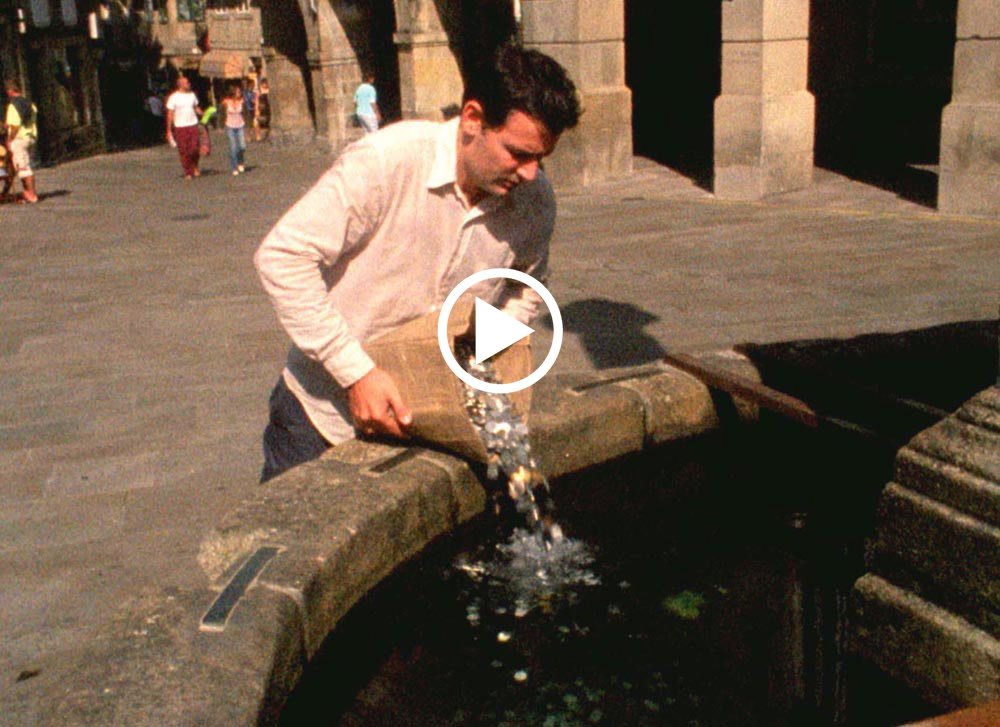
| Roman Ondak, Lucky Day, 2006, 16 mm Film, color, silent, duration 04:00 min (loop)
| |
|
Editorial: Roman Ondak, Lucky Day, 2006
With Lucky Day Roman Ondak explores the contemporary possibilities of pilgrimage in a secular context. The film follows a man who tosses a large number of coins into a fountain, in a somewhat grandiose gesture of applying for luck. As such, the work puts individual agency to the test against institutionalized systems of belief. Even though the action seems to attest to a worldly approach to the idea of divine protection, it also evokes a child-like trust in the quantity of ardent wishes.
The film was shot in Santiago de Compostela, a central historical site of pilgrimage since medieval times and still much frequented today. The fountain into which the film’s protagonist spills the coins is the fountain of Praza de Fonseca. It is not dedicated to any particular saint, but locals claim that its water has healing properties and may protect against blindness.
|
|
|
Interview/Portrait: Tomás Saraceno, TED Talk, 2017
Presented in 2017, Tomás Saraceno’s TED talk was part of the section Connection and Meaning at the annual TED Conference in Vancouver.
As the TED organizers put it:
In a mind-bending talk that blurs the line between science and art, Tomás Saraceno exhibits a series of air-inspired sculptures and installations designed to usher in a new era of sustainability, the "Aerocene." From giant, cloud-like playgrounds suspended 22 meters in the air to a balloon sculpture that travels the world without burning a single drop of fossil fuel, Saraceno's work invites us to explore the bounds of our fragile human and terrestrial ecosystems.“
(In Spanish with English subtitles)
|
|
|
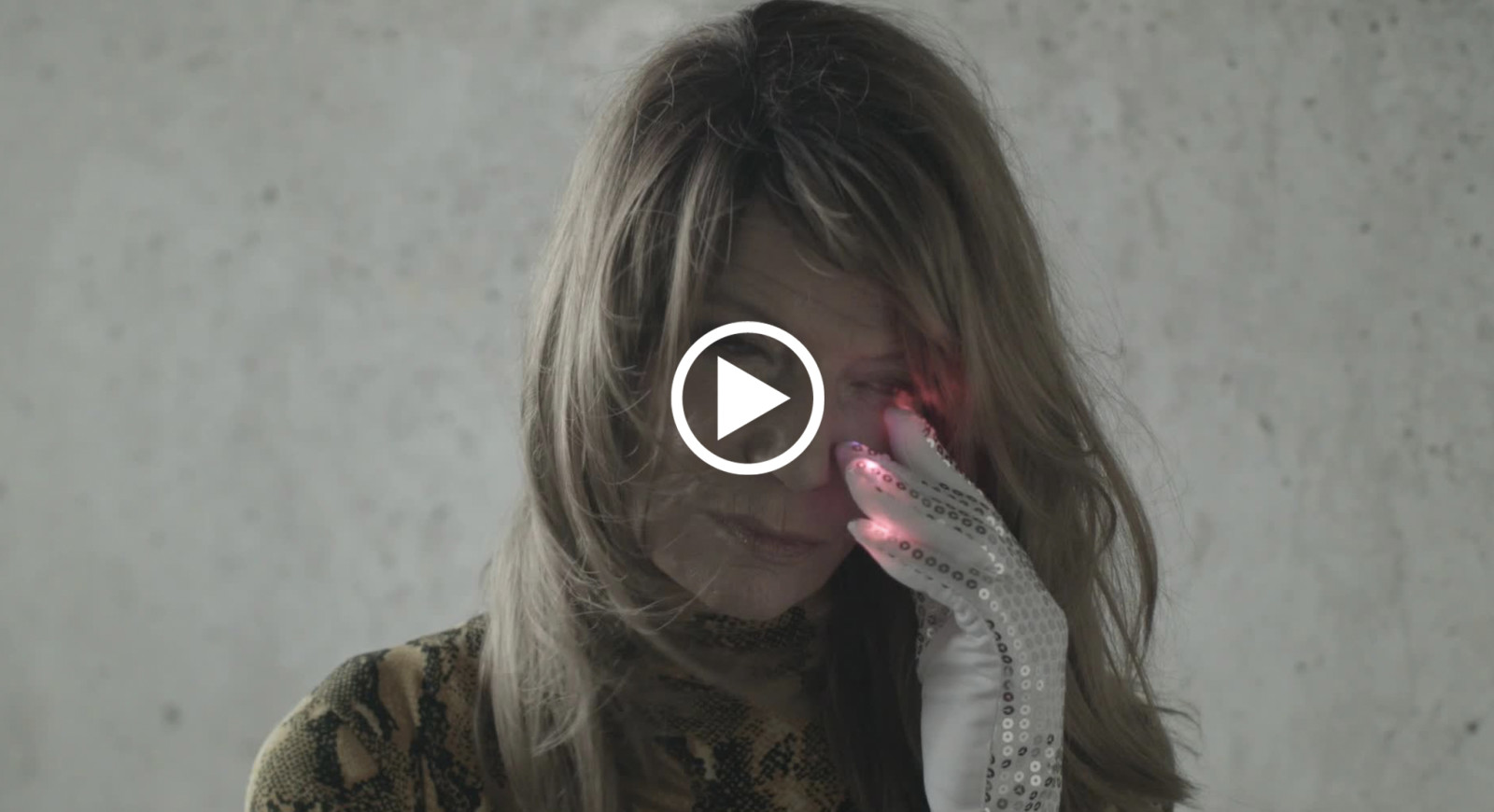
| Christopher Roth, Blow Out (The Film), 2016, HD film, 2 USB sticks, duration 10:04 min
| |
|
Architecture: Christopher Roth, Blow Out (The Film), 2016
Blow Out was largely shot in and around the architect Dante Bini’s La Cupola, a dome-like structure built for the Italian modernist filmmaker Michelangelo Antonioni and his lover the actress Monica Vitti. The film evokes the building’s history—built for a couple that split up before its completion—as three women appear to visit the site, vanish and reappear.
Despite their apparent age difference, there is a distinct likeness between the three female figures, encouraging a temporal slippage: Vitti is shown in an interview from the 1960s, while a woman of similar age looks out from the now-dilapidated building's terrace and wanders through the interior, with its central, erotically charged staircase conceived by Antonioni as a kind of display for his beautiful lover. Adding further temporal layers, the third woman, Vera Lehndorff, appears in three guises: as young actress who, known under her stage name Veruschka, starred in brief but iconic scenes in Antonioni’s 1966 Blow Up, as herself circa 2015, and as miniaturized 3-D scan wearing the costume from the Antonioni film.
Surtitles have a hypnotic quality but also give the film a loose narrative structure, beginning with its initial direct salutation: “Dear Antonioni…”, here doubling as a reference to Roland Barthes’ 1980 text on the director’s work.
The film constructs a densely woven web of associations with a cast of characters that includes actresses, architects, film directors and philosophers in a constant temporal displacement, yet somehow all connected to the decaying building on the Sardinian coast.
|
|
|
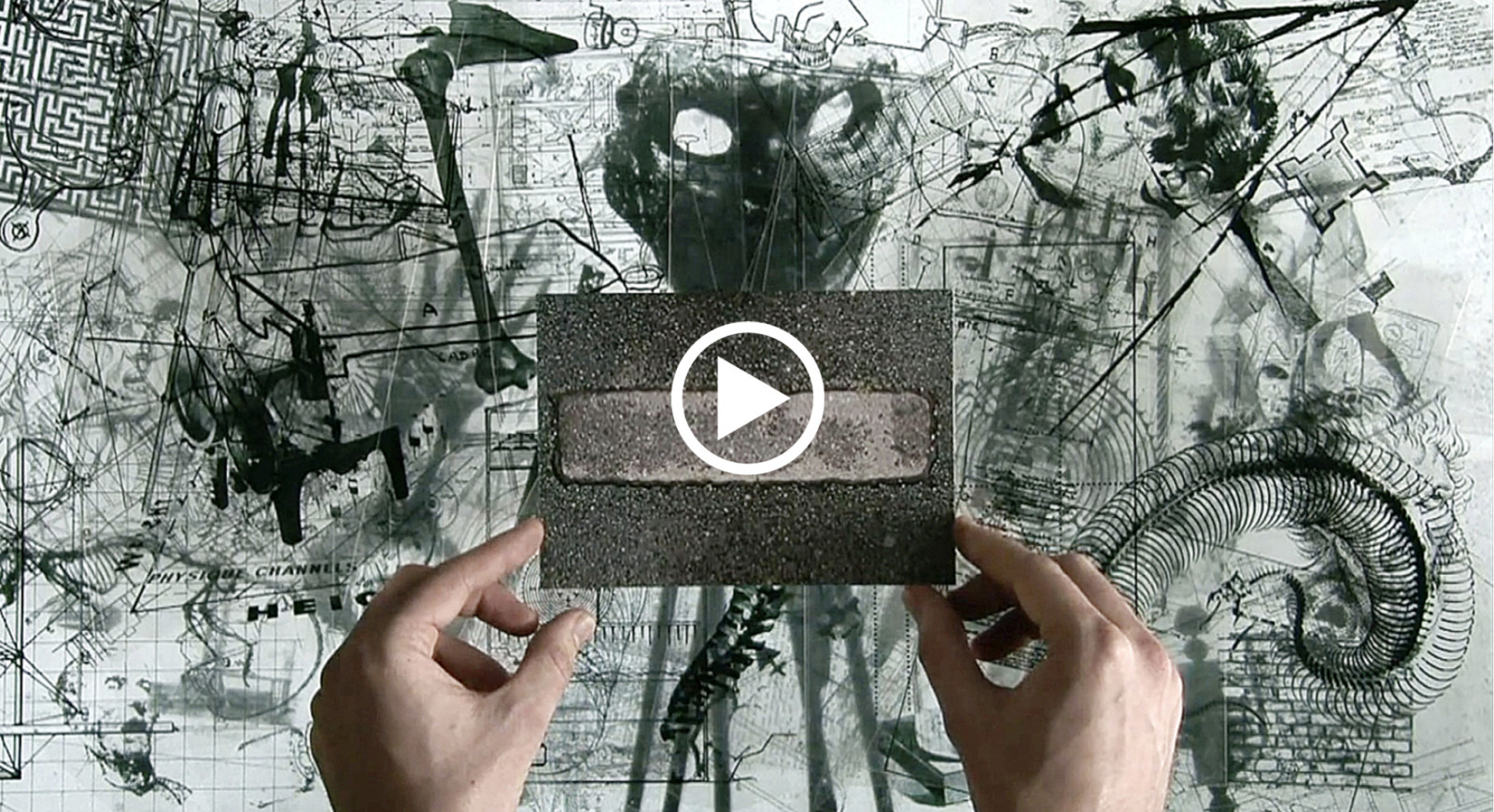
| Etienne Chambaud, Counter-History of Separation, 2010, with Vincent Normand, HD video, duration: 52 min
| |
|
History: Etienne Chambaud, with Vincent Normand, Counter-History of Separation, 2010
The film Counter-History of Separation, co-written with Vincent Normand, is an ambitious documentary which begins under The Reign of Terror which would simultaneously witness the invention of the guillotine as a mass-execution device, and the creation of the prototype of the modern museum with the opening of the Muséum central des arts de la République, the first public collection and ancestor of the Louvre. The timeline finds is close in 1977, when the last decapitation by guillotine occurred in France and the Centre Pompidou, a new museum paradigm, was inaugurated.
The film takes the form of an animated stop-action video. While a narration leads through the history in several especially themed segments, hands can be seen manipulating images, cut-out illustrations and other objects on a surface which functions as screen, foreground and backdrop. Text and visual narration continue in and out of sync. Both weave a complex web of textual, cultural and historical references. The voice narration was recorded during a performance at the Centre Pompidou.
See below for Etienne Chambaud’s text and the book on the film!
|
|
|

| Dominique Gonzalez-Foerster, Noreturn, 2009, HD film (color, sound, 16:9 format), duration: 16 min
© VG Bild-Kunst, Bonn, 2020
| |
|
Science-Fiction: Dominique Gonzalez-Foerster, Noreturn, 2009
A group of children in school uniform is entering an exhibition space in which bunk beds are placed in orderly grids among giant sculptures. First excited, playing and fooling around, eventually the children start calming down, running for shelter underneath a giant Henry Moore sculpture. Playing a game of tag, they start whispering “Noreturn”/ “Noreturn?”
The film was made amidst TH. 2058, Dominique Gonzalez-Foerster’s large-scale installation for Tate Modern’s Turbine Hall in 2008. TH. 2058 looks 50 years into the future, as the inhabitants of London have taken shelter in the Turbine Hall from a never-ending rain. Under this premise, outdoor public sculptures have been effected by the rain as well: enlarged by 125%. Replicas of iconic works by Louise Bourgeois, Alexander Calder, Henry Moore, Bruce Nauman, Claes Oldenburg and Coosje van Bruggen fill the hall. 200 bunk beds scattered with books, are placed in orderly grids around them. On a large LED screen at one end of the space, edited excerpts from science fiction and experimental films play, while piercing lights suggest some unseen surveillance.
|
|
|
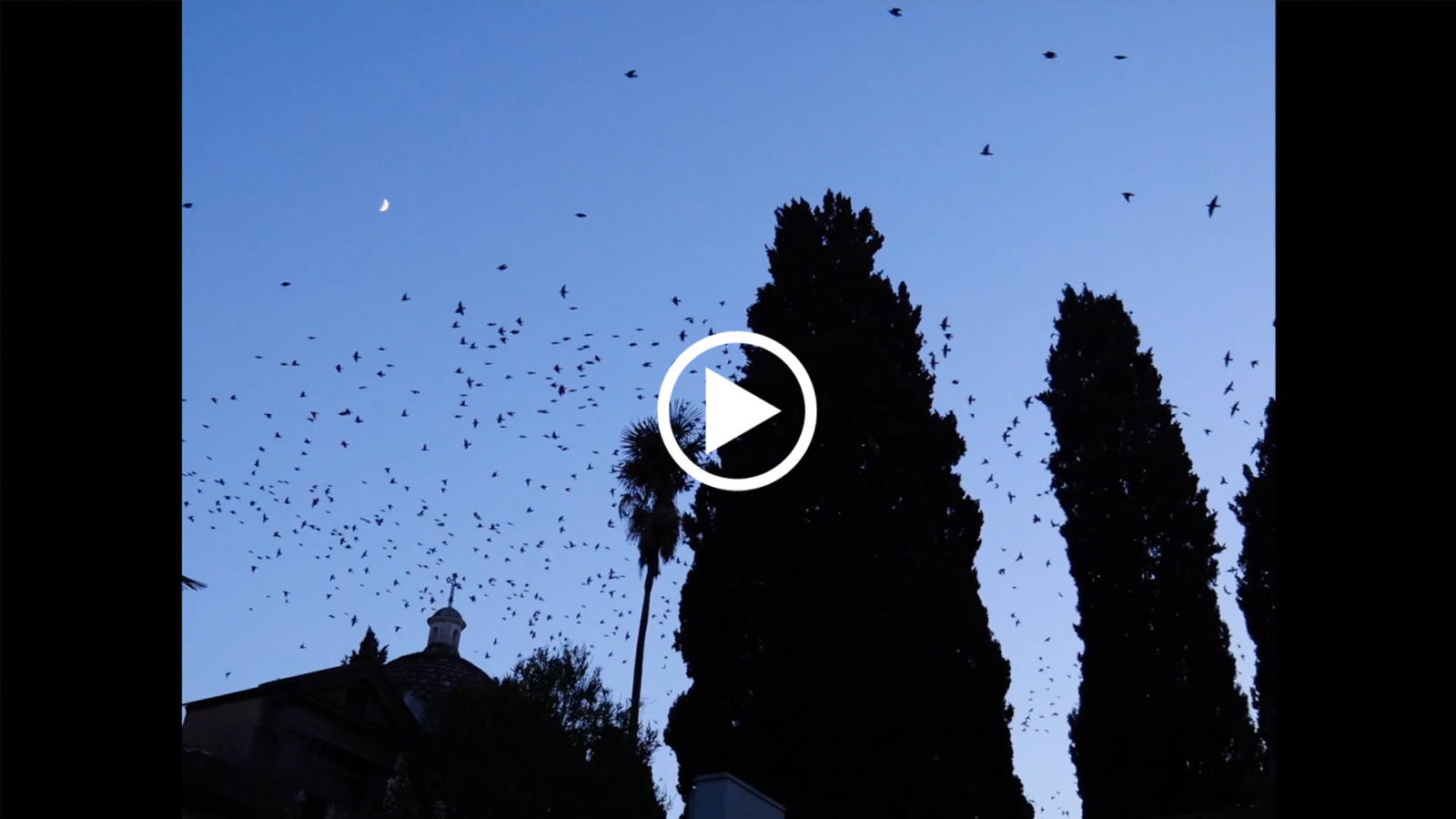
| Christoph Keller, Storni Morti, 2018, single channel digital video (color, sound), duration: 15 min
| |
|
Nature: Christoph Keller, Storni Morti, 2018
On January 30, 2018 hundreds of dead starlings fell from the sky, simultaneously in different parts of the city of Rome. Christoph Keller’s video takes this event as point of departure: While accidentally locked at night in the Campo Verano cemetery, the artist filmed the dramatic flight pattern of thousands of starlings at dusk. The footage is interspersed with the interview of Francesca Manzia, a conservationist at LIPU (Wildlife Recovery Center). The presence of the artist is never felt, neither when filming the birds’ hectic flying, nor when recording Manzia, thus echoing the conservationist’s argument that humans should not intervene with bird’s ecosystem.
Christoph Keller’s work constitutes an examination of the history of science and of the way in which knowledge is gathered and organized. Long-term projects concern, for instance, anthropology (in particular the history of Western European engagement with the Amazon region), fringe science and parapsychology.
|
|
|
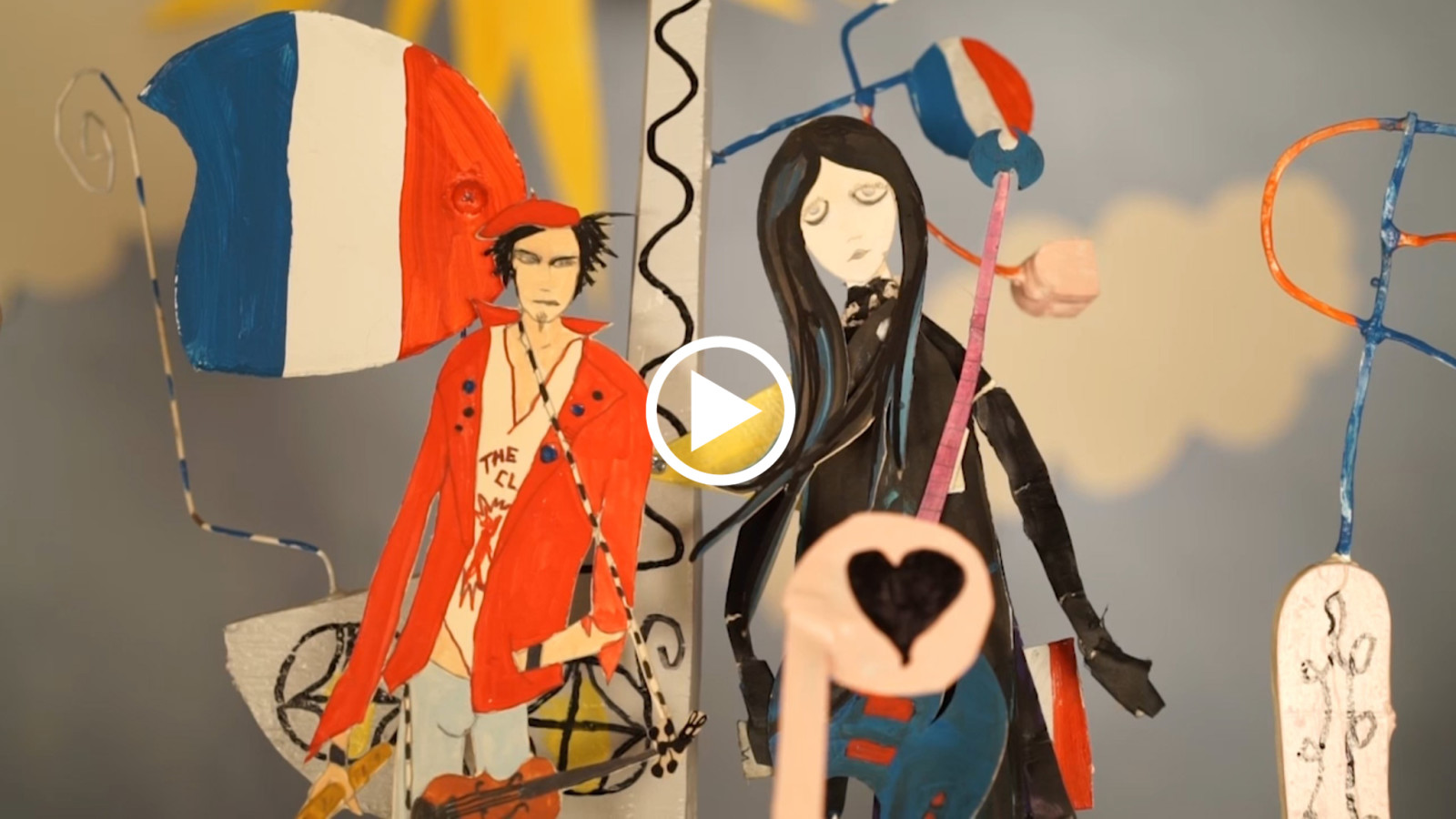
| Nathan Carter, The DRAMASTICS are Loud, 2016, HD Film (colour, sound), duration 27:25 min
| |
|
Music: Nathan Carter, The DRAMASTICS are Loud, 2016
The Dramastics are Loud is an ebullient musical celebration of the daringness of self-invention and of the ups and downs of friendship. Nathan Carter conceived the story, designed the characters, their clothes, all the props and sets, as well as creating entire streetscapes. The film follows four young women who found a fictional punk band. The soundtrack features dialogue, sound effects, and music, performed by Carter and a number of collaborators and friends.
The production of the film took on a festive quality, accentuating a communal aspect long present in Carter’s work: “The activity of world-building felt like inventing and playing with punk dolls in their punk dollhouse. The entire process, of improvising and building and recording and filming, was like making a DIY basement recording. All of it looked and sounded immediate, fast, loose, and loud. Meticulous craft took a backseat to enthusiasm.”
The generous stance of Nathan Carter’s works and his exhibitions as fun-fueled events, encapsulates the exuberance associated with youth culture, yet at the center of his production is the excessive force of culture in general, the expenditure of creative energy as gift—generosity as anarchist gesture.
|
|
|

| Simon Fujiwara, Joanne, 2016, HD Video with Installation, duration 12:06 min | |
|
Beauty/Fashion: Simon Fujiwara, Joanne, 2016
The subject of the film is Joanne Salley, a former high school art teacher of Simon Fujiwara from 2000 to 2002. Winner of the 1998 Miss Northern Ireland beauty pageant, artist, teacher and champion boxer, Joanne had a formative influence on Fujiwara as a scholarship student at the prestigious Harrow School for boys in Britain. Several years later, Joanne became the victim of a tabloid newspaper scandal after students discovered and circulated topless photographs of her that had been taken privately. The ongoing media campaign that followed destroyed her career and public image.
In 2016, Fujiwara and Joanne embarked on the production of a short film that aimed, through the use of advertising and marketing techniques, to restore her image. One way to do this, they felt, was to try and harness the new possibilities of social media: a realm where emotions are readily shared. Yet in a world where full self-disclosure is valued as the hallmark of authenticity and relatability, Joanne realizes she must meet her new public’s demands with another form of exposure–this time emotional. Conspiring and confounding, transparently manipulative but also genuinely moving, Joanne (the film) does not pretend to portray Joanne the woman.
The film is generally presented as part of an environment that includes a series of free-standing lightboxes depicting Joanne in athletic gear, often in familiar poses–acting out a faux naturalism that has become a trope in advertising campaigns.
|
|
|
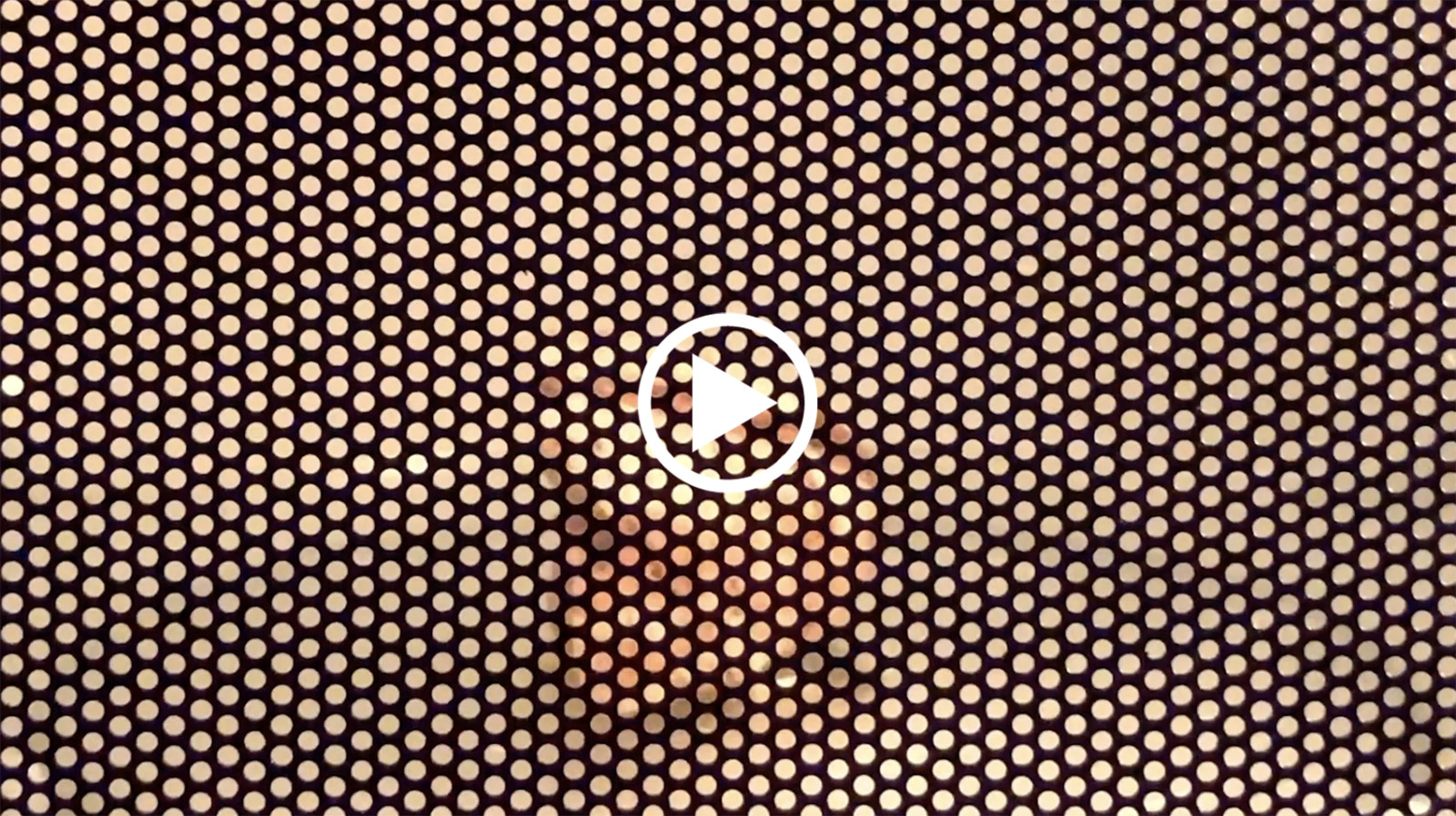
| Karin Sander, Brot / Bread, 2019, video (colour, sound), duration: 4:20 min (loop)
© VG Bild-Kunst, Bonn, 2020 | |
|
Food: Karin Sander, Brot / Bread, 2019
The short, looped video depicts a rotating object behind a screen with small round openings. The video begins with the diffuse shape—what appears as the eponymous bread—inside a lit space rotating clockwise. Halfway through, the light goes out and the characteristic bell of a microwave oven is heard. When the light comes back on, the object turns in the opposite direction: counterclockwise. The object seems to slowly dissolve. At the end, the light goes out again and the bell is again heard.
The work plays with the optical illusion created by the screen which literally dissolves the images into pixel-like parts, while the microwave oven appears to turn the piece of bread into a fiery wedge, dissolving in smoke and flame.
Sander's video plays on everyday experiences, adding an alienating element to draw attention to the subjectivity of perception and its easy manipulation. In addition, her video is an exercise of "impressionist" or by extension, digital, disassembly of an image into splotches of color, dots, or pixels.
|
|
|
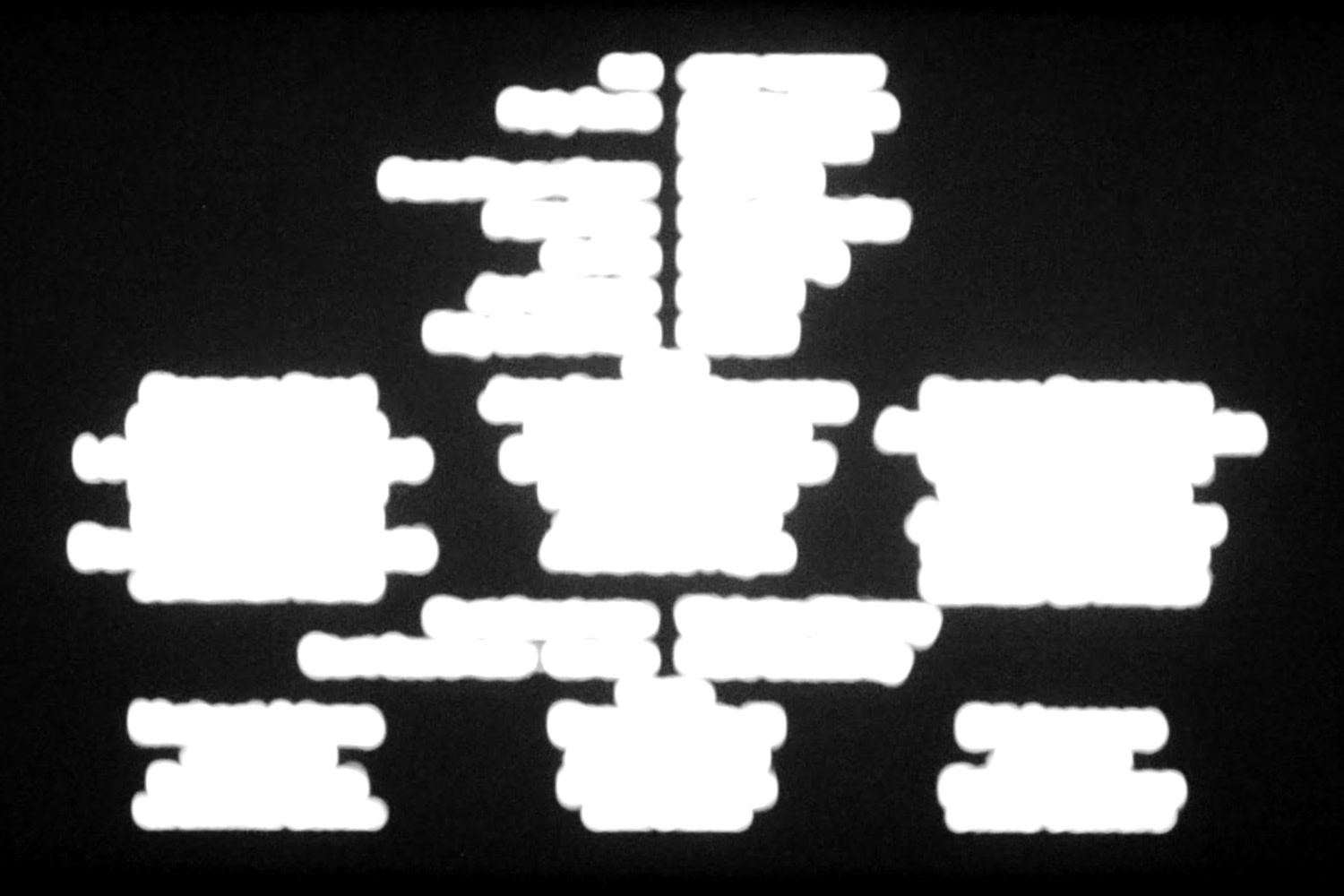
| Ceal Floyer, Untitled Credit Roll (CMIYC), 2013, video projection, duration 04:47 min (loop)
© VG Bild-Kunst, Bonn, 2020 | |
|
Imprint: Ceal Floyer, Untitled Credit Roll (CMIYC), 2013
The video shows the credits from a movie, but the titles and names have been blurred. Where the names stood, one can merely make out thick bands of white, like ribbons of tufted clouds on a dark background. The projection creates the impression of floating layers of white mist, as the bright areas run together before one's eyes, adding an actual blur to the one the artist created.
Floyer chose credit rolls from an actual film: Catch Me If You Can. Her piece however renders the film "Untitled" and all its participants anonymous. This act of rendering unknowable is reminiscent of the expunging of secrets from official, declassified materials, but the artist reverses the process not just visually as those documents are usually blacked-out but also by deleting the names of people seeking credit and public acknowledgement.
For the visitor, happening onto the video, the situation is unclear: it appears one may be coming in at the end of a film but all information has been rendered illegible. There is no "real" film to wait for, since the effaced credit roll repeats. For once however we deliberately focus on the part often ignored. The almost apparitional presence created by the white lights in Floyer's work demands its own careful concentration from the viewers who may be trying to decipher at what they are looking.
|
|
|
We are very happy to announce that Isa Melsheimer's exhibition at the KINDL will be open beginning next week. Before you visit the exhibition, you can find out more about the artist, her practice and selected works in our dedicated Online Viewing Room.
|
|
|
The Reading Corner — Etienne Chambaud
|
|
The book Counter-History of Separation is based on the eponymous film, which I wrote in 2010 with my friend, the art historian Vincent Normand. The film is about the parallel history of the guillotine and the modern museum, for its historical span can be said to be bordered by two dates: 1793, which simultaneously witnesses the apparition of the guillotine on the revolutionary stage and the creation of the prototype of the modern museum with the opening of the Muséum central des arts de la République, the first public collection and ancestor of the Louvre, and 1977, when the last decapitation by guillotine occurred in France and when the Centre Pompidou, itself a new museum paradigm, was inaugurated.
Yet the film is by no means a linear narration of a series of events that occurred between those two dates, it explores, in various fragments, the space opened by the optical and political limits of modernity by tracking the dissolution of the apparently contradictory functions of the guillotine and of the modern museum in what we called the “Decapitated Museum”—a space of dialectical operations, of cutting and stitching, displacing and curating.
The film itself is a kind of battleground for disjunctive forces: at time the ever-present and extremely dense voice-over text and the multilayering of images and hand gestures seem to fight for limited available space within the temporal borders of the film’s duration; it is creating an excess of stratified information, intentionally taxing the limits of what can be taken in. It might even oblige a viewer to decide whether to watch or to understand, to focus or to embrace.
Few years after the film was released, Vincent and I thought about a book version of Counter-History of Separation. It was not to be a book about a film, but more of a remake of the film in the space of a book, a translation of its content but also of its mode of production, notably its mode of production of oppositional relations between image and text. The text of the voice-over became the basis of a book of which there was only one copy, a book of only text, which was then photographed in various settings and scales to produce the final book, a book of images.
In that sense, Counter-History of Separation is a book of images on which appear a text that is both part of those images and somehow separated from them: it exists at its own constant scale and knots together the fragmentary sceneries in which it appears. The outcome is a photography book that is as much a text document as it is an imaginary scene.
—Etienne Chambaud
|
|
|
Counter-History of Separation
Etienne Chambaud and Vincent Normand
Printed by Geers Offset, Gent
Texts in English and French
Edition of 750
Hardcover, 288 pages
Available here
|
|
|
Journey Through the Gallery |
|
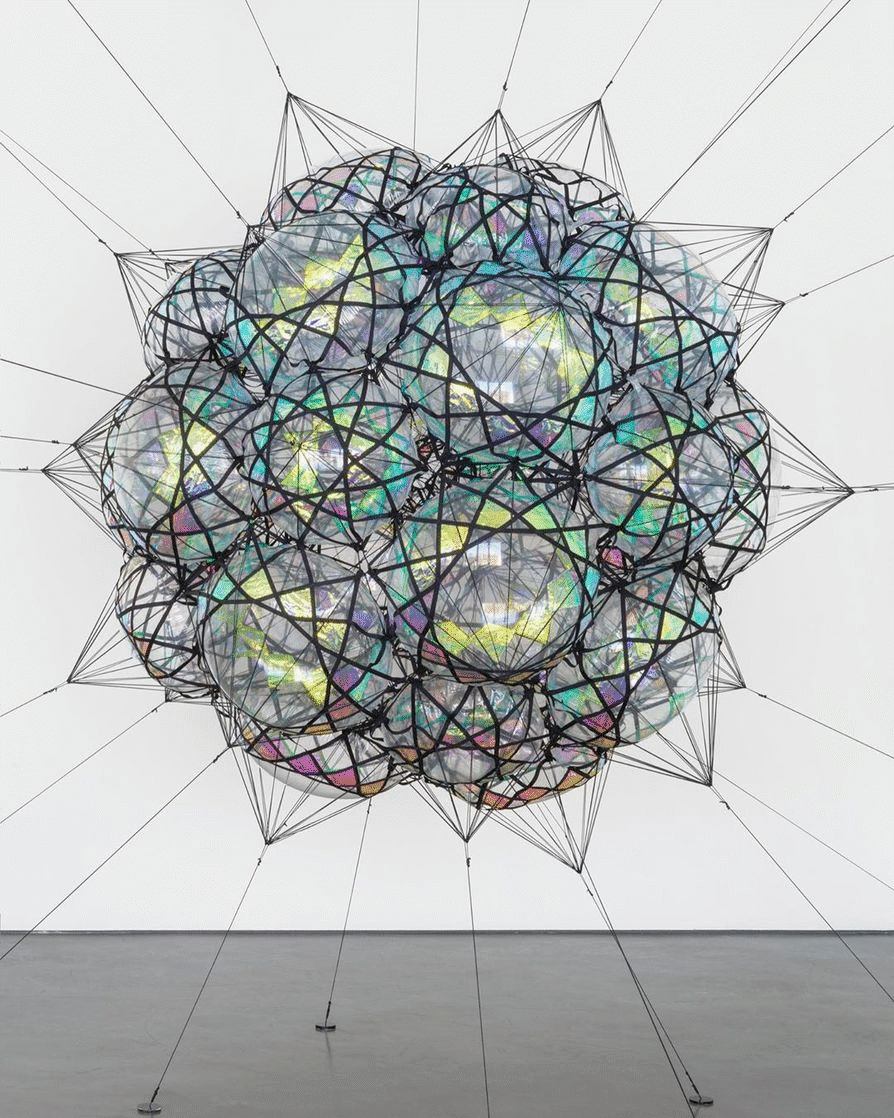
| Tomás Saraceno, Flying-Garden/Air-Port-City/32SW/Iridescent, 2007, inflatables, webbing, iridescent foil, elastic, ø 170 cm approx. (cluster)
Photo © Roman März | |
|
This sculpture, titled Flying-Garden/Air-Port-City/32SW/Iridescent refers to Tomás Saraceno's larger ongoing project Cloud Cities in which the artist explores the possibilities of future autonomous and sustainable environments, architecture and urbanism. Saraceno seeks to propose utopian visions of cities, settlements and gardens, floating in the air and relaying only on the energy of natural sources. His visions are informed by the interdisciplinary research that he carries out together with his studio – a series of forays into material science, biology, astrophysics, engineering and atmospheric studies. Click HERE for more information about the work. |
|
|
|
|